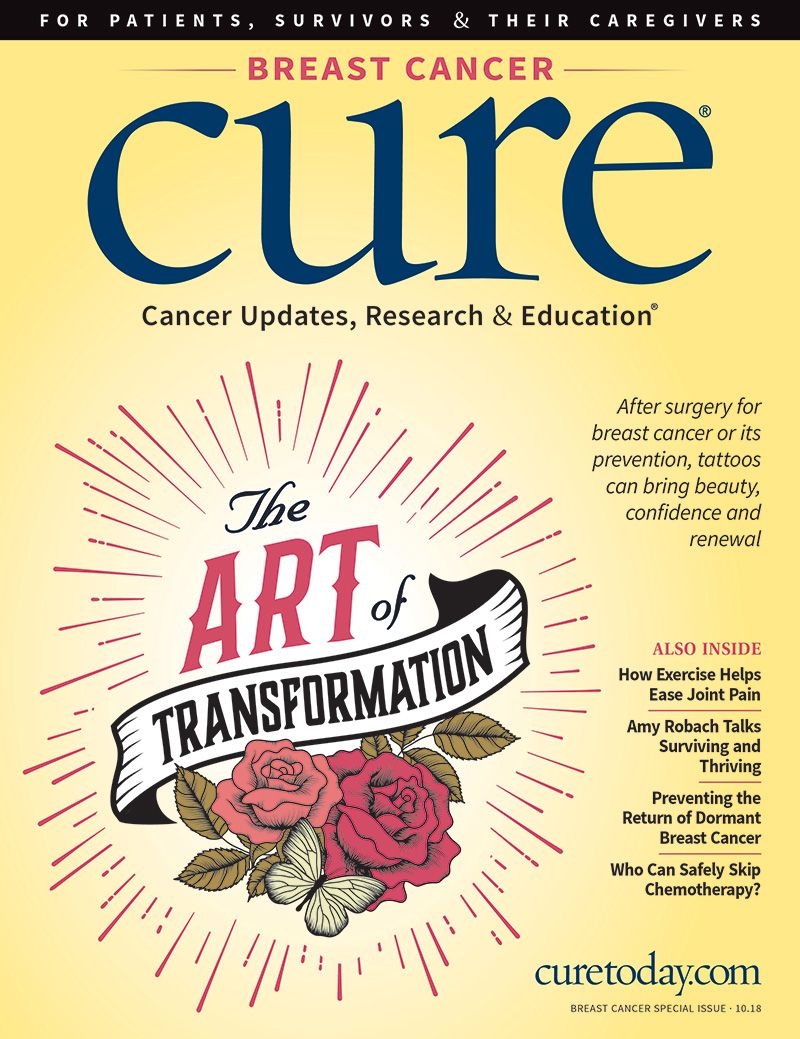Publication
Article
CURE
Good Things Come in Threes
Author(s):
Three CDK4/6 inhibitors have been approved, offering new options to those with metastatic, hormone-driven breast cancer.
A NEW CLASS OF drugs for patients with hormone-driven breast cancer has generated additional therapeutic options, including more combination therapies. That’s the basis for excitement around the Food and Drug Administration’s approval of three cyclin-dependent kinase (CDK) 4/6 inhibitors in the last three years, according to Jacqueline Vuky, M.D.
Vuky, an associate professor of medicine at the Oregon Health and Science University School of Medicine, discussed the management of metastatic breast cancer with CDK4/6 inhibitors during an interview at the 2018 OncLive® State of the Science Summit™ on Breast Cancer. OncLive® is a sister publication of CURE®.
During her talk at the summit, Vuky gave an overview of the three drugs: Ibrance (palbociclib), Kisqali (ribociclib) and Verzenio (abemaciclib). They interfere with the activity of the enzymes CDK4 and CDK6, thus preventing cancer cells from dividing or multiplying. Each drug was approved for use in combination with an aromatase inhibitor (AI) as initial treatment for postmenopausal women whose metastatic cancers are fueled by the hormones estrogen or progesterone, but not by the protein HER2. AIs work by preventing the body’s natural production of estrogen.
In clinical trials, the CDK4/6 inhibitors sparked an improvement in progression-free survival (PFS) — the time until disease grows — but did not increase length of life. When added to AIs, they led to better outcomes for all eligible patients.
OncLive®: Can you share the highlights of your presentation on CDK4/6 inhibitors?
Vuky: CDK4/6 inhibitors are very exciting. We haven’t had a breakthrough with endocrine (hormonal) therapy for metastatic disease or even early-stage disease for a while. For a long time now, we have been trying combinations with endocrine therapy and therapeutic targets. The fact that this is the first combination that has changed median PFS is very exciting for our patients. Giving them more options is why we do clinical research.
How do multiple approvals of CDK4/6 inhibitors affect treatment?
Much like with other targeted therapies, such as mTOR inhibitors, it is exciting that we have choices, but it does seem that each one is a little different. Although the data show similar efficacy, as well as improvement in median PFS, compared with the standard therapy, each differs in side effects and schedules, and even abilities to bind to CDK4 or 6. We like choices, although we do have to be concerned about the price of all of these drugs and the added side effects compared with AI therapy alone.
If a patient’s disease progresses on a CDK4/6 inhibitor, is there rationale to move them to another?
There are no data yet. We need and would like to have data to inform us and our patients on the effectiveness of this strategy. Since abemaciclib is approved as a single agent and has stronger affinity for CDK6 as opposed to CDK4, there has been discussion that it’s reasonable to consider switching to this drug after progressing on palbociclib or ribociclib (although the study that led to its approval did not include any patients who had progressed on another CDK4/6 inhibitor.)
A very interesting trial is looking at adding a CDK4/6 inhibitor to an AI in patients whose disease is starting to progress. I find that fascinating, and these questions need to be answered.
What are your thoughts on combinations with CDK4/6 inhibitors?
There are some triplet combinations that may overcome resistance to endocrine therapy. We participated in a combination of Kisqali, the mTOR inhibitor Afinitor (everolimus) and the AI Aromasin (exemestane). At least in our patients, it was really well tolerated.
What about the potential of Verzenio plus the immunotherapy Keytruda (pembrolizumab)?
Lilly Oncology has some information on that preclinical data, as well as the neoMONARCH trial, which is the presurgical trial where they looked at Verzenio as a way to prime tumor cells for immune recognition. Results from a phase 1 trial with Verzenio plus Keytruda, an immune checkpoint inhibitor, were presented in December 2017. (The findings suggested the combination sparked responses in some patients with hormone-driven metastatic breast cancer without worsening side effects.)
(For HER2-positive cancers), there are trials combining CDK 4/6 inhibitors plus anti-HER2 therapies such as Herceptin (trastuzumab) and Perjeta (pertuzumab), as well.
Do you have any advice for patients and their physicians who are deciding between agents?
First, I would ask whether the patient needs combination therapy versus AI therapy. We know that there is a subgroup of patients with a good prognosis who might do well with an aromatase inhibitor alone, although the exact way to define such patients remains unclear. Patients who have poor prognostic features, such as a short time from (post-treatment) endocrine therapy to relapse, might do better with combination therapy. That is the first question they have to ask: “Is combination or single-agent therapy better for my case?”
The second thing to do is look at the toxicities; if a patient has an erratic heartbeat or is on a drug to treat this, I would not give Kisqali. I do think there are some clinical judgments to make when looking at different toxicities and tailoring it for patients.




